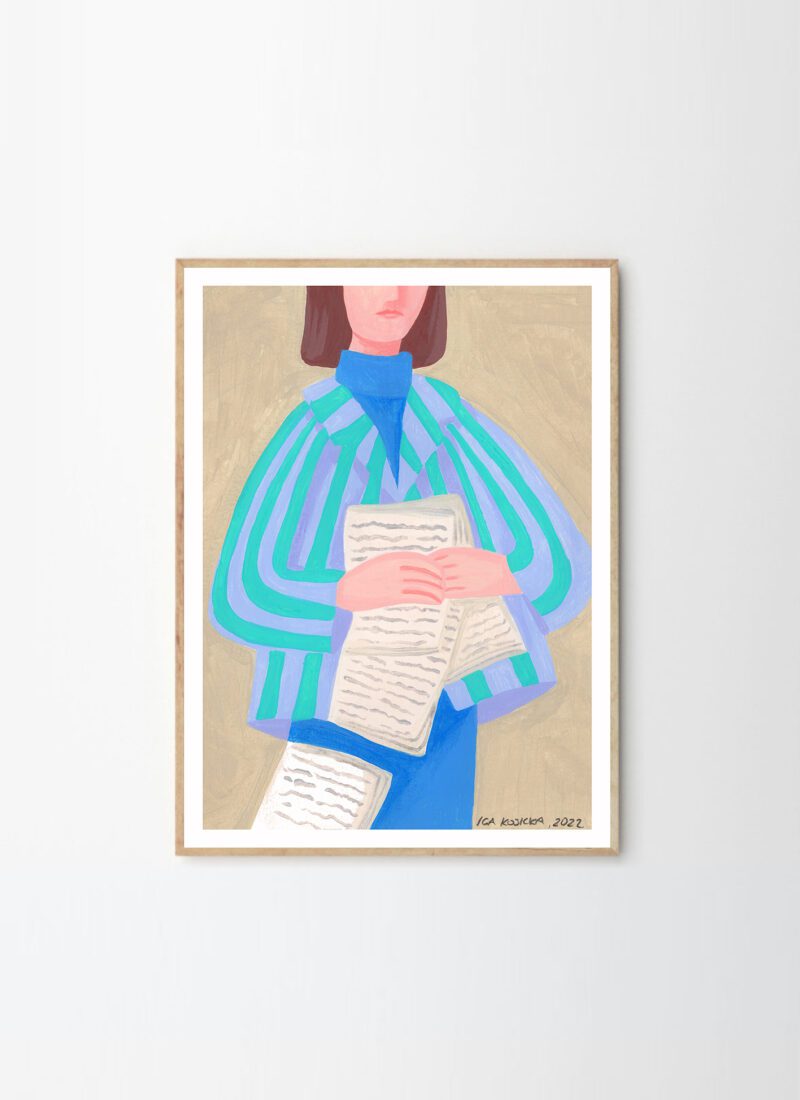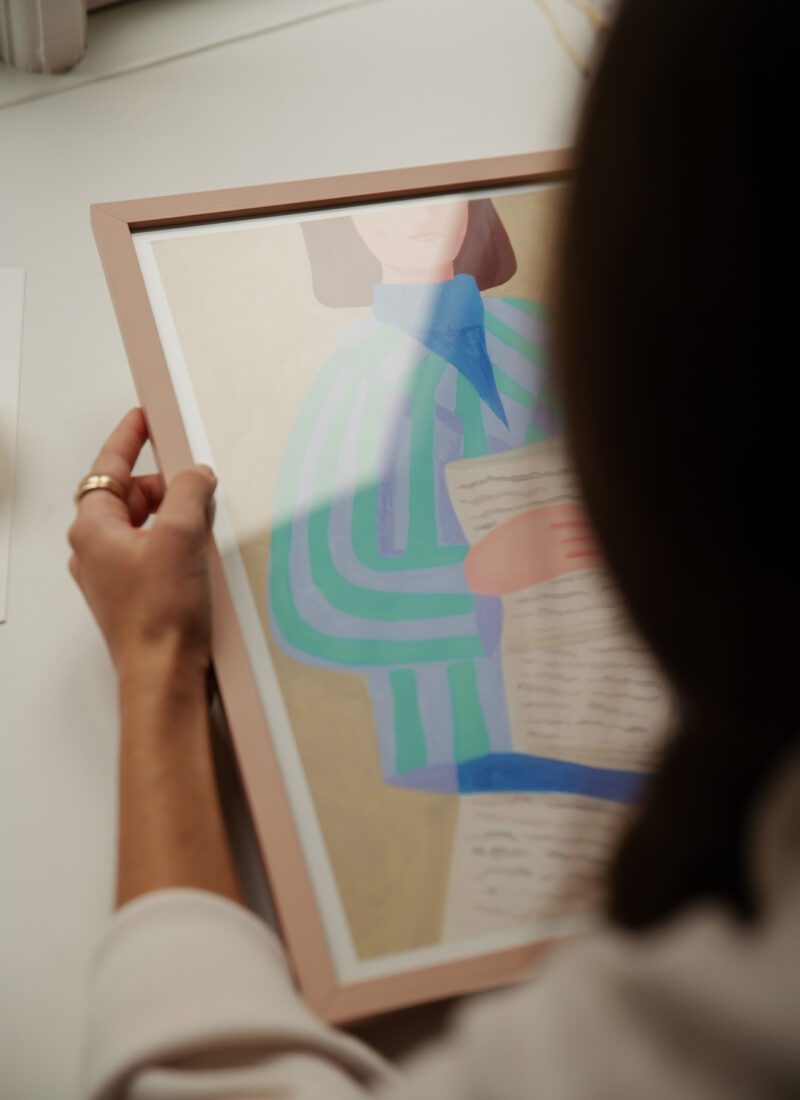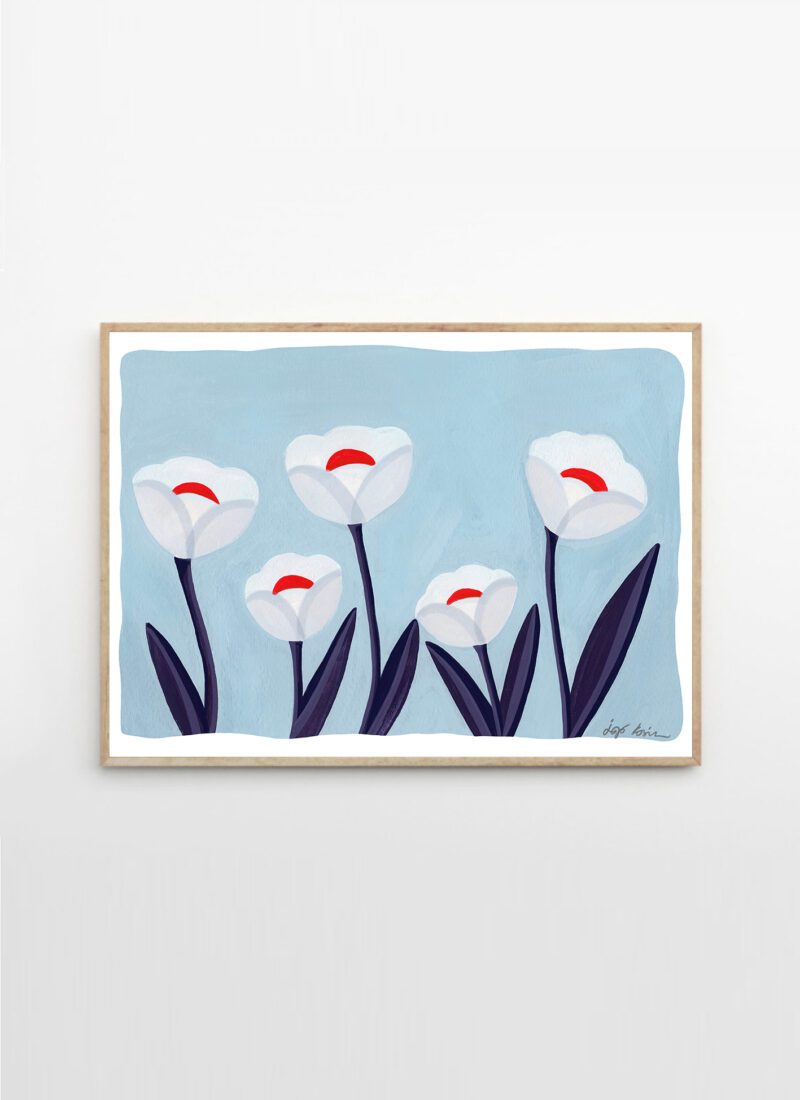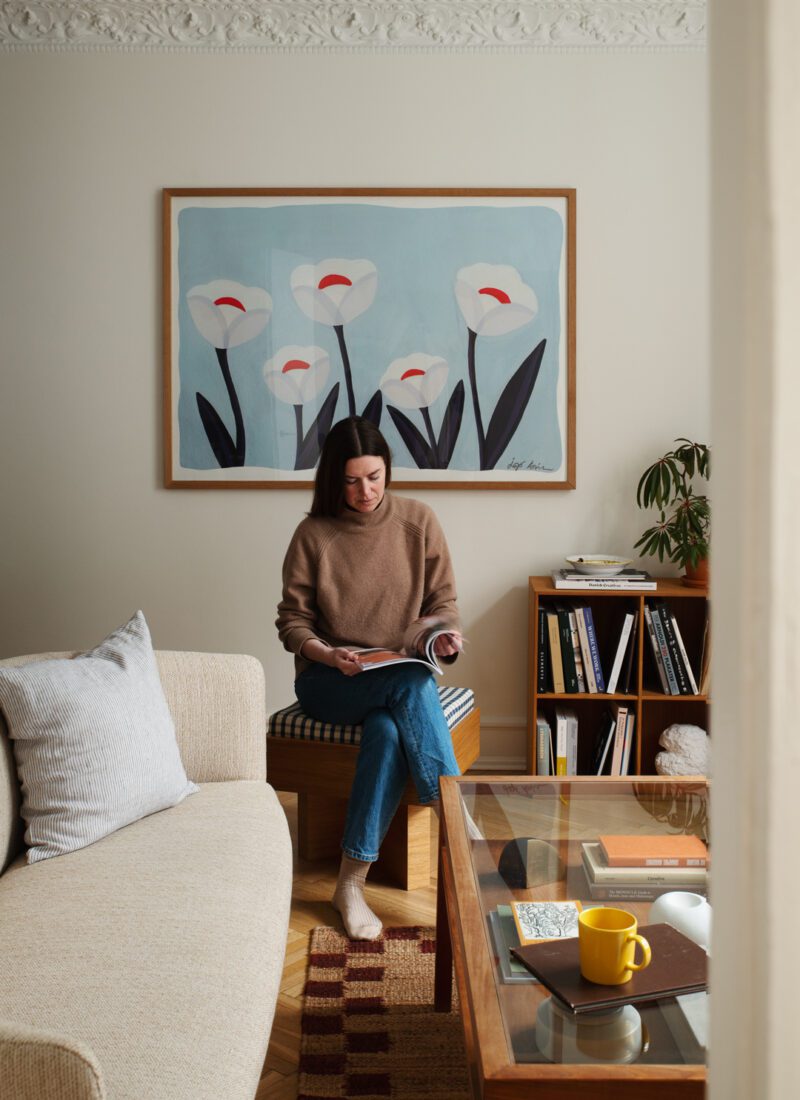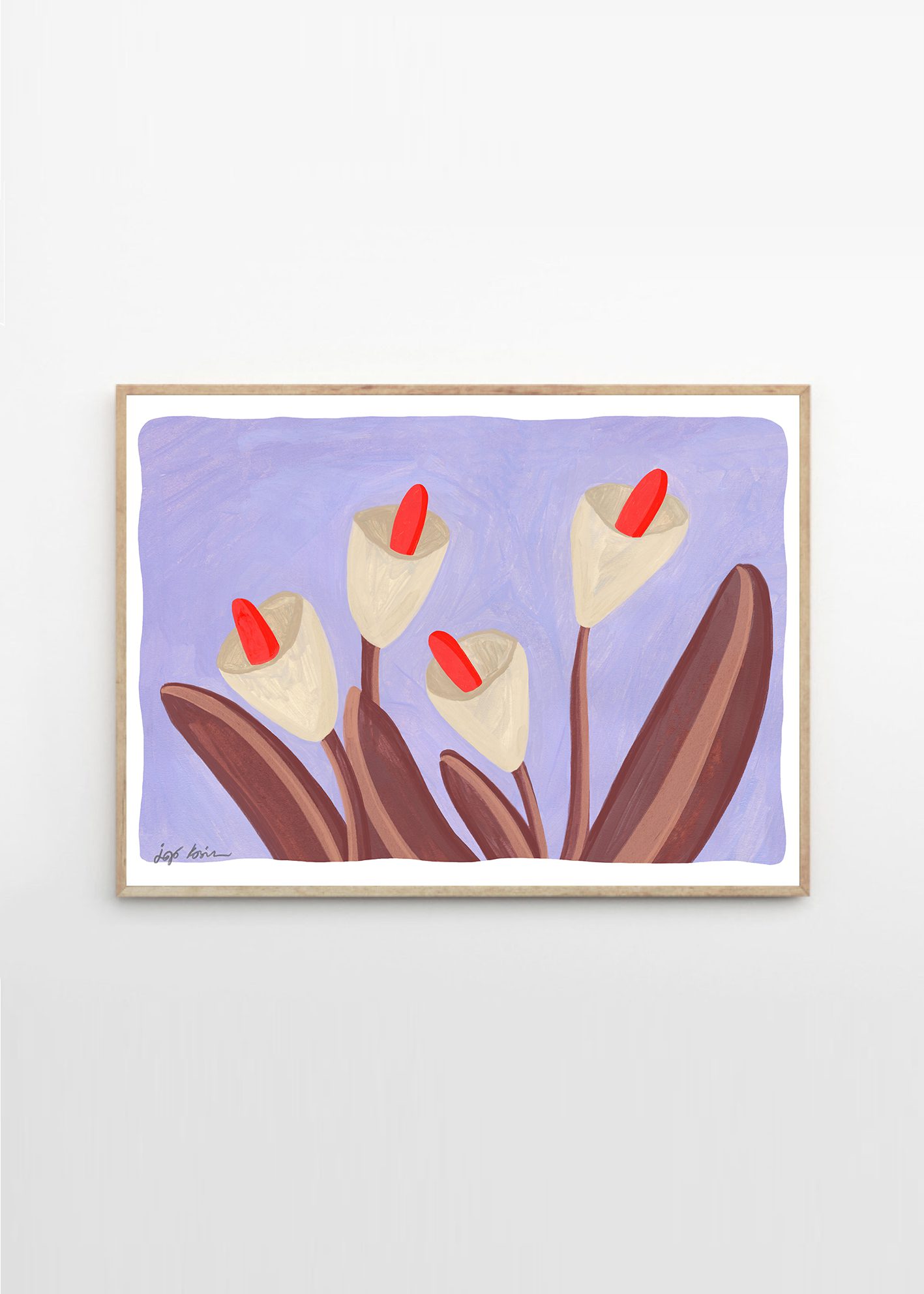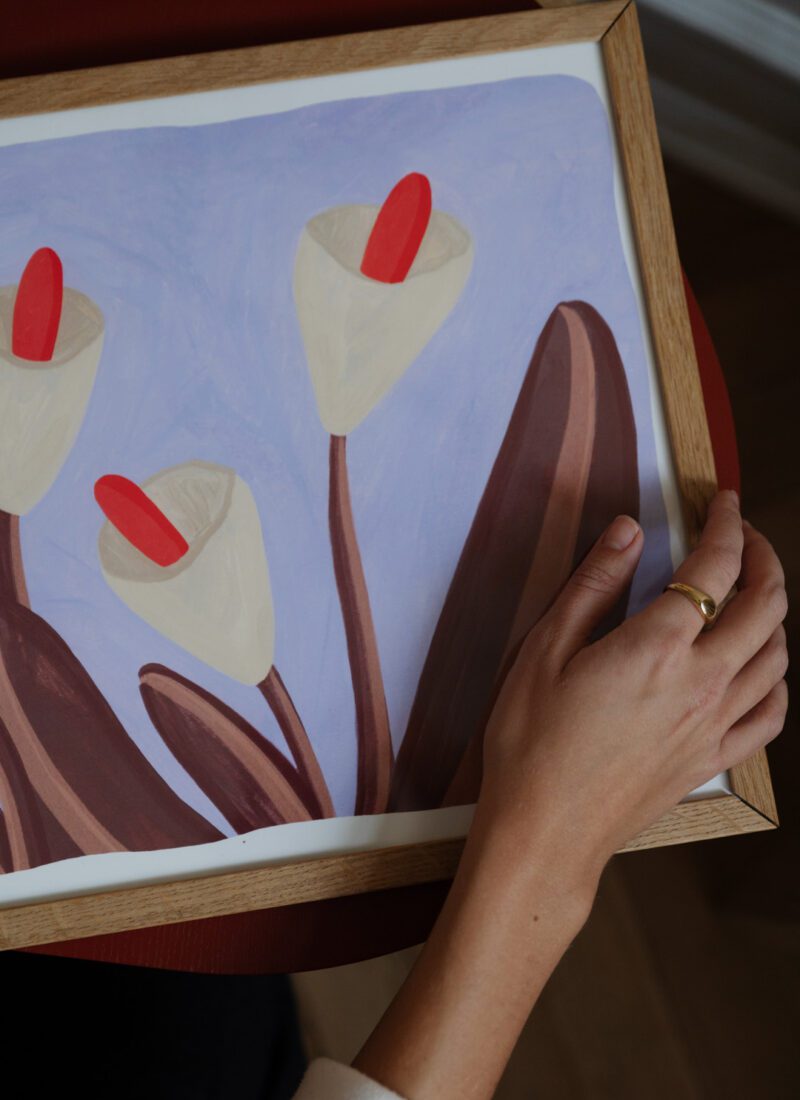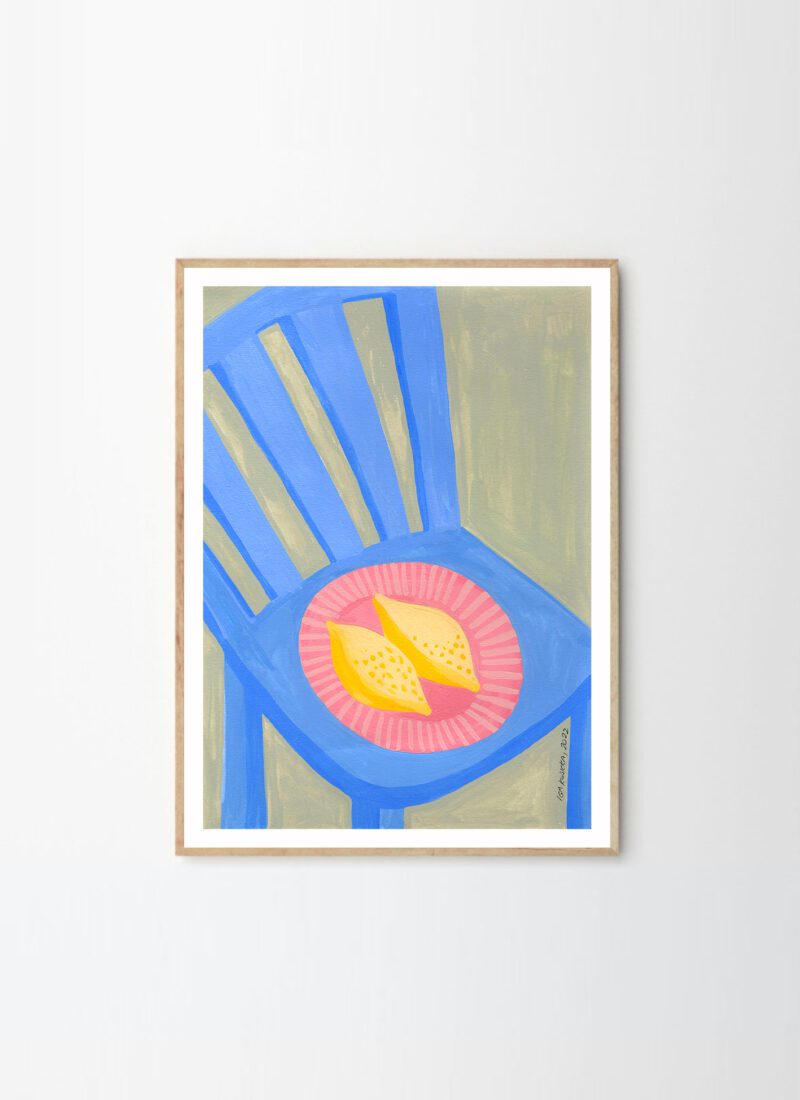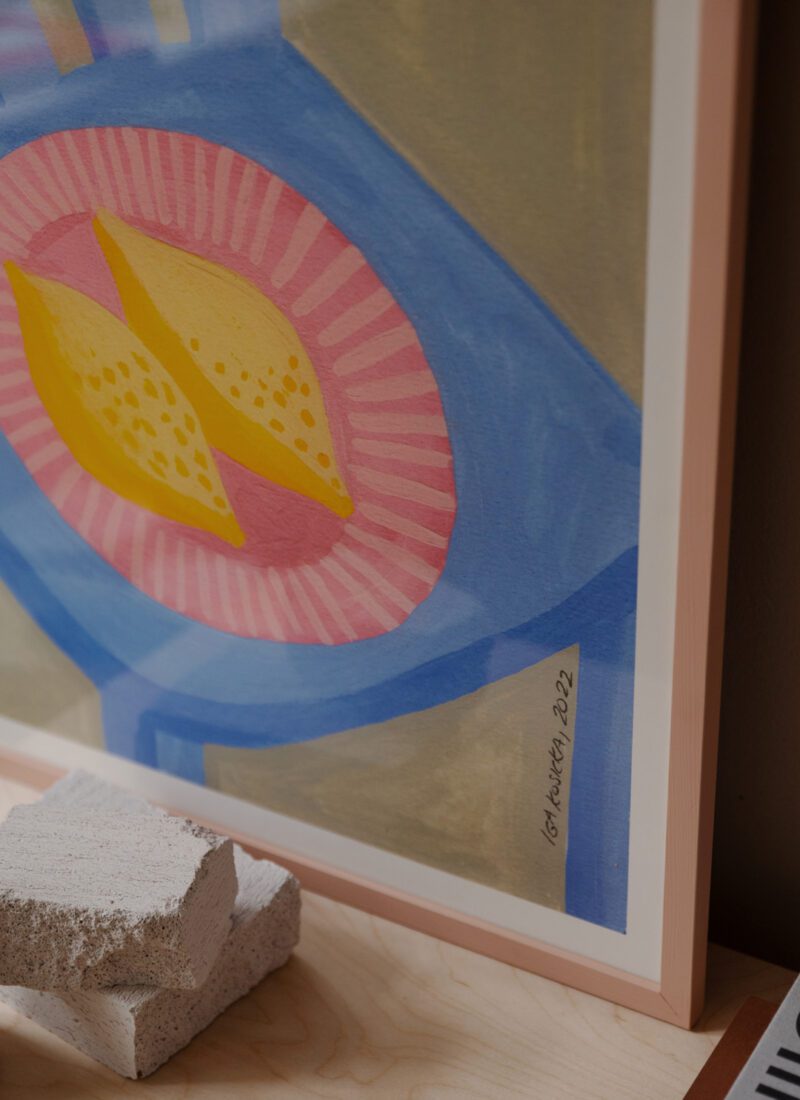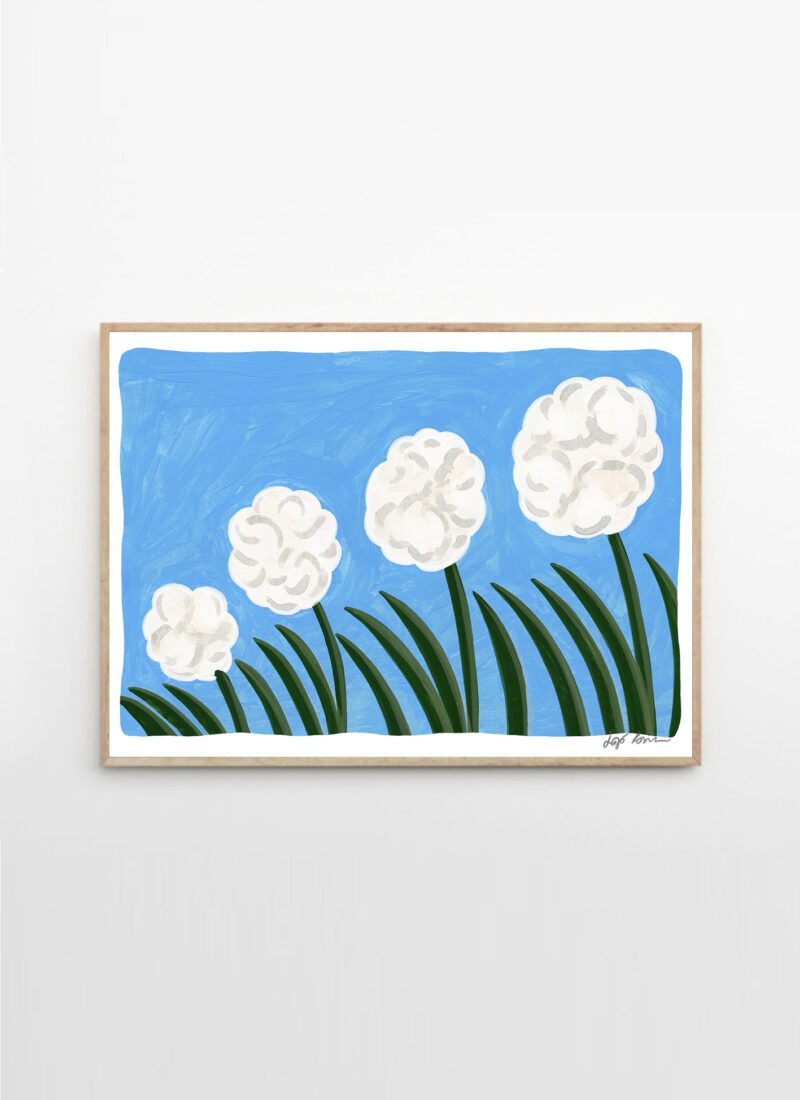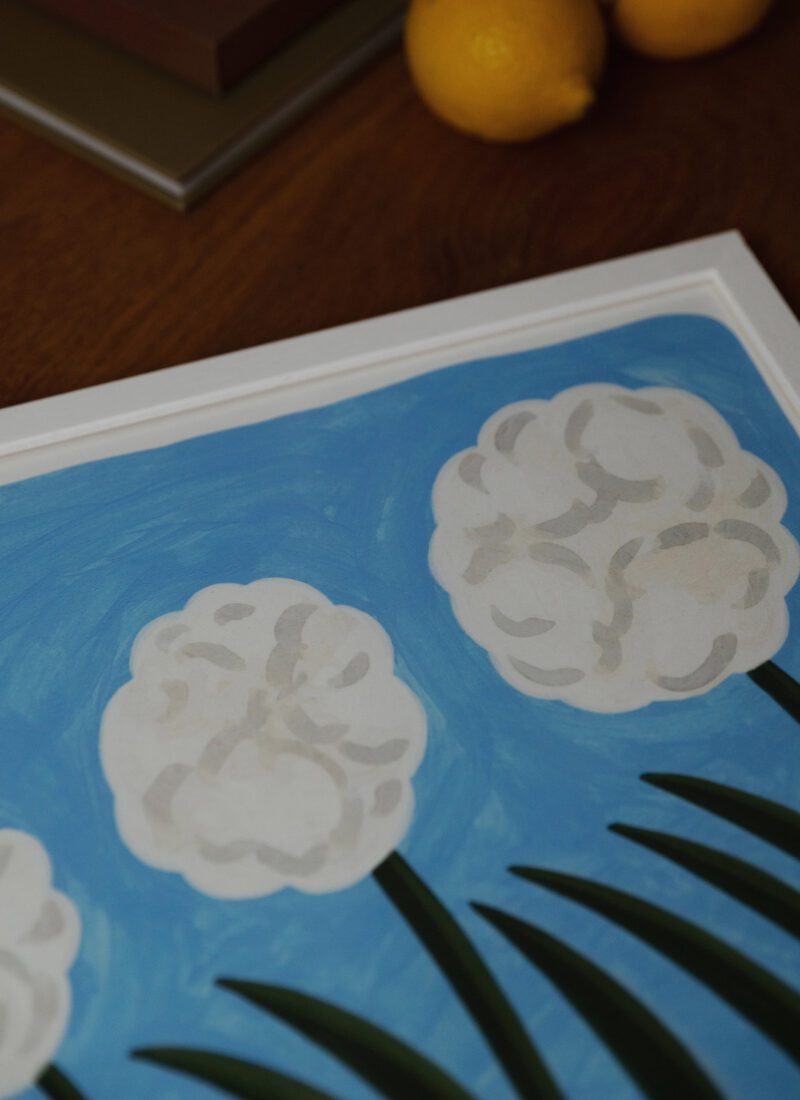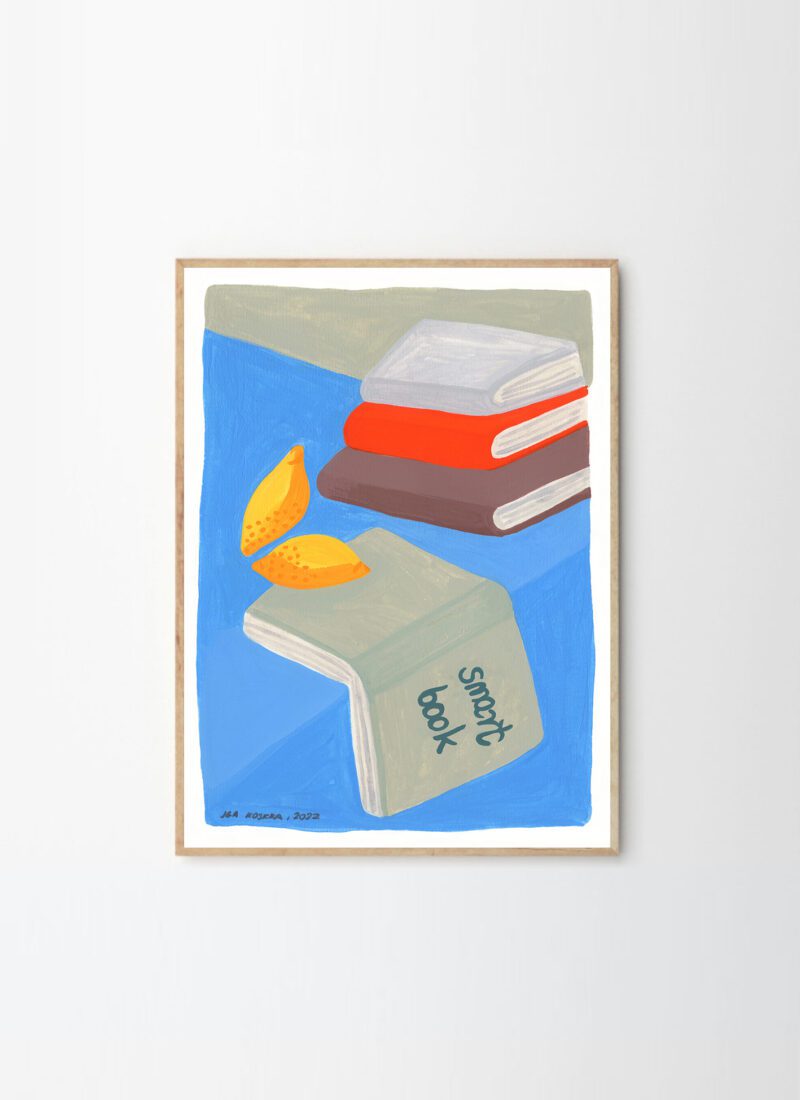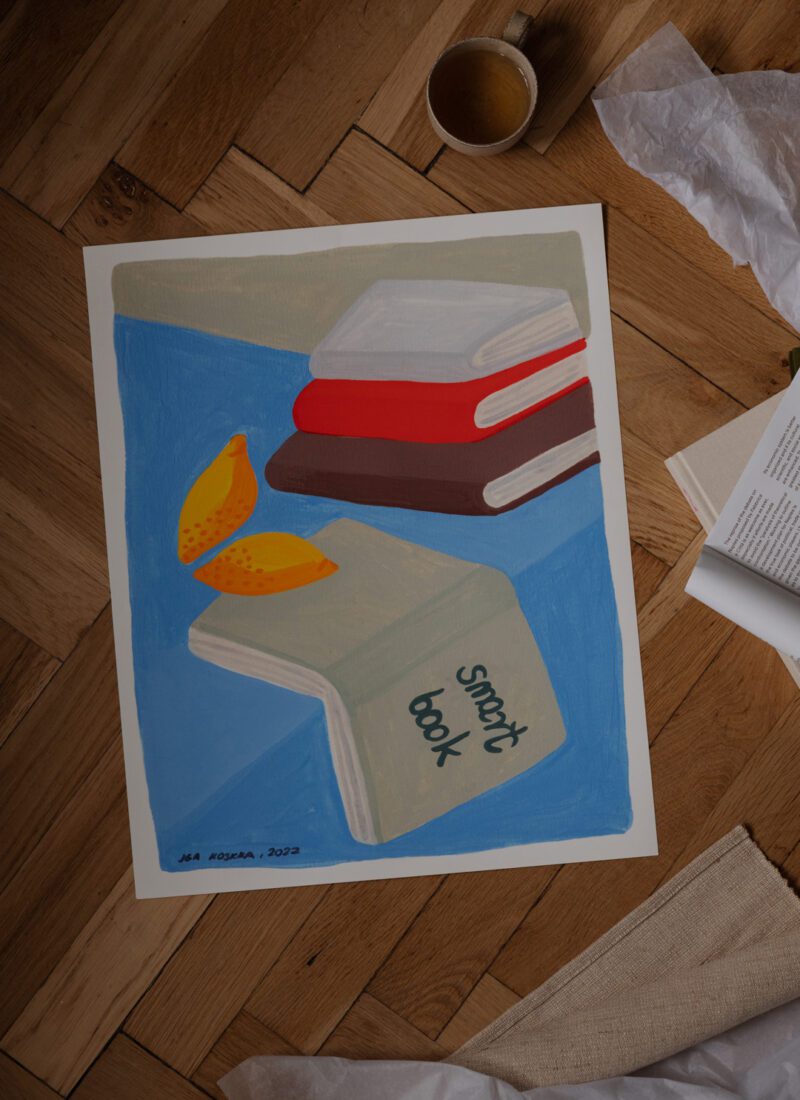Iga Kosicka On Copenhagen and Colours
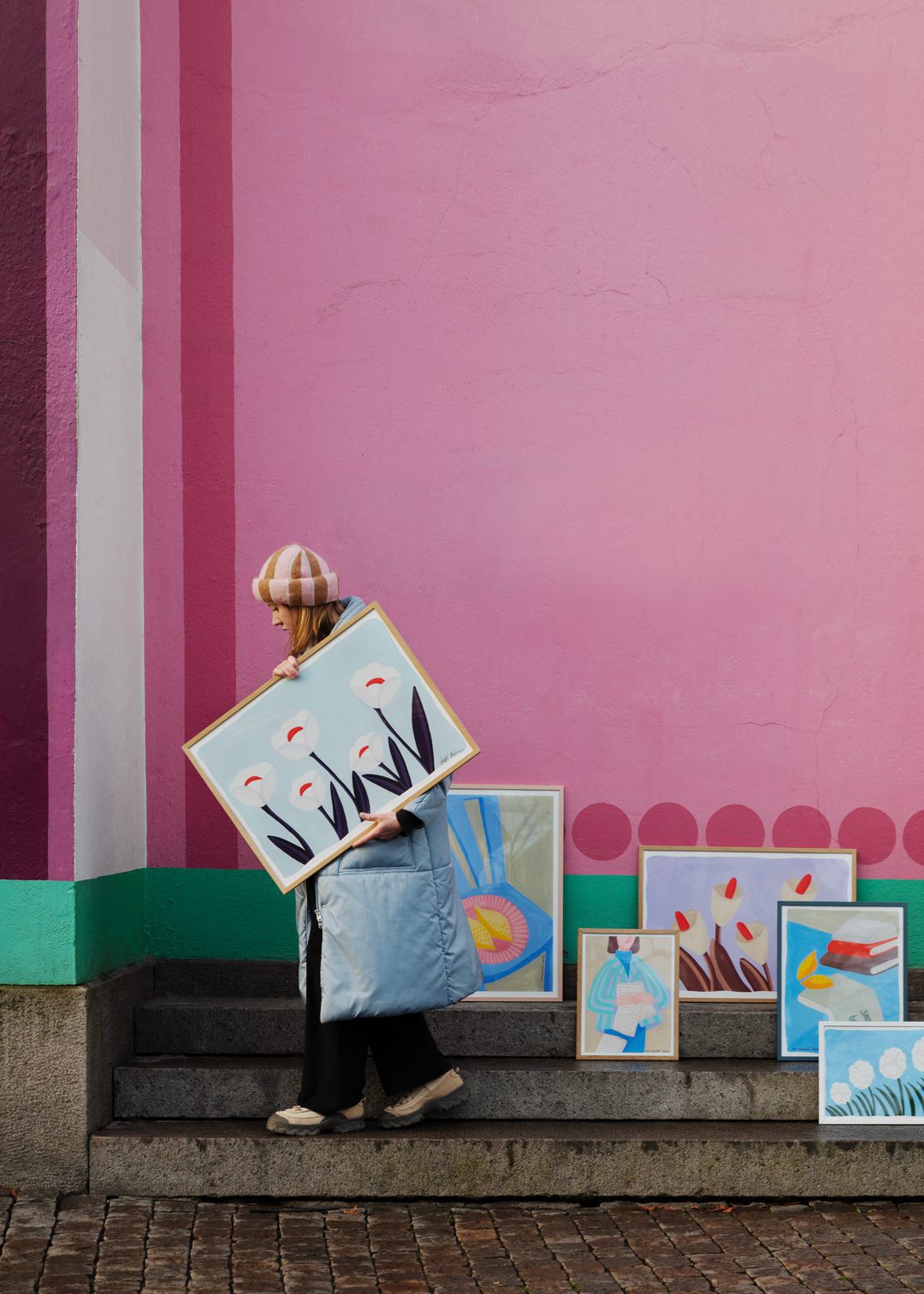
What Colours and Melancholy
Have in Common
Creative Conversation
We meet the Polish artist Iga Kosicka at the iconic Copenhagen building Palads. It was painted in its current colour scheme by the Danish artist Poul Gernes in 1988 and is still undoubtedly the most colourful piece of architecture in the city.
Much like the Palads building, the artworks of Kosicka draw on a curious colour palette of cool pastels. A palette which might just fool the viewer, as the topics of Kosicka’s art harbours a sense of solitude — she uses her unique understanding of colour to explore and challenge the more melancholic subjects.
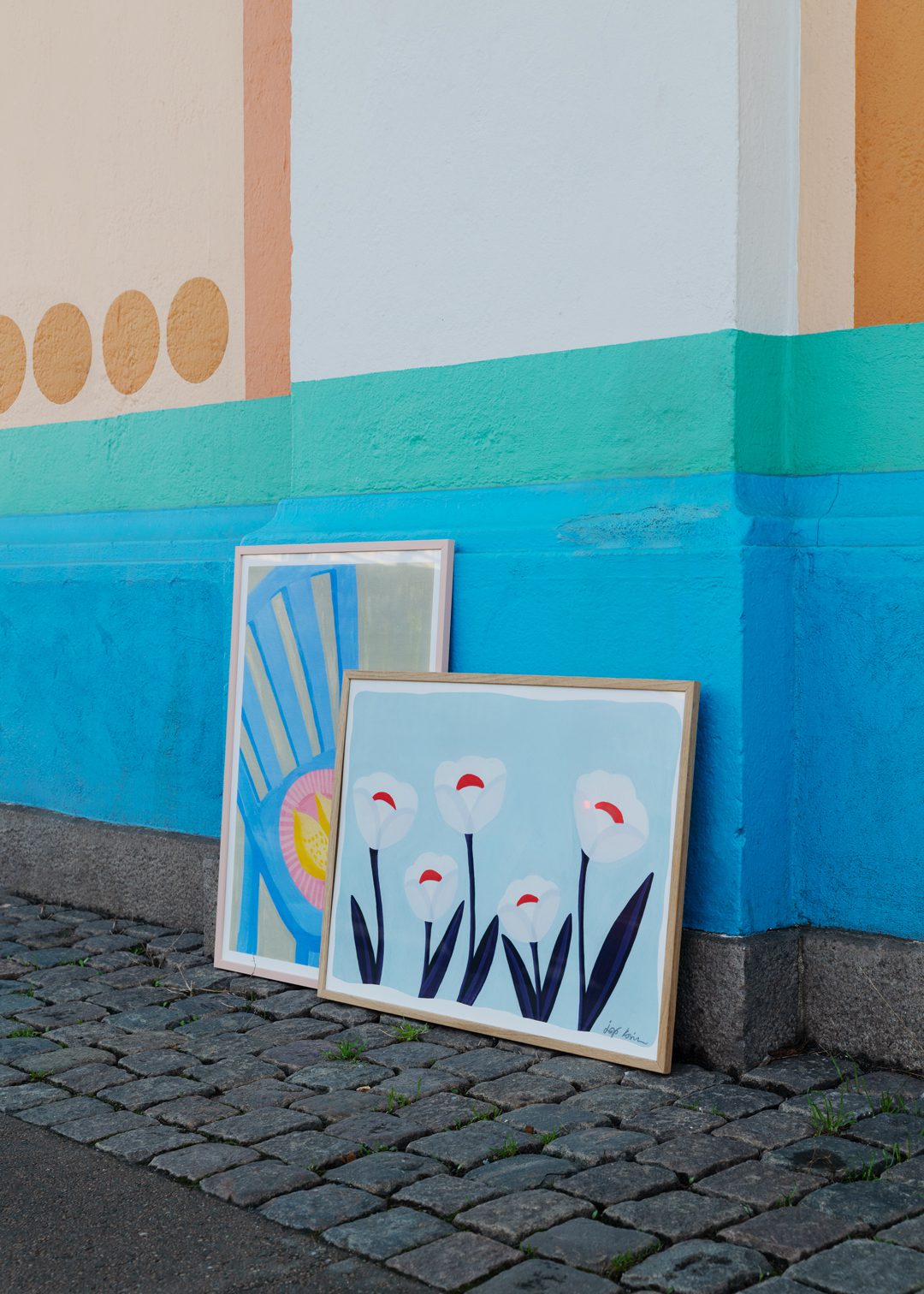
A Familiar Scene
The scenes and motifs of Iga Kosicka are more or less familiar to us all: Still lebens of quiet everyday moments, stacks of books and florals. “I am the observer type,” Kosicka says “and I like to romanticise everyday life.”
The artist captures moments from her day-to-day life either by taking a quick picture or by writing down a note of the situation, describing the feelings she is absorbed by at that point in time. Later she takes these snapshots of reality and transfers them to the paper.
“Sometimes it is a feeling or it might be randomly lying objects that give off a sense of comfort with the combination of their shapes and colours.”
Kosicka also dabbles with repainting older illustrations to see how her style has changed over the years. This is exactly what she did with her new print Smart Book, which Kosicka has created exclusively for The Poster Club. “I still liked the idea of randomly stacked books from my old illustration, but I wanted to change a few things and add a little more chaos with a yellow accent in the form of lemons.”
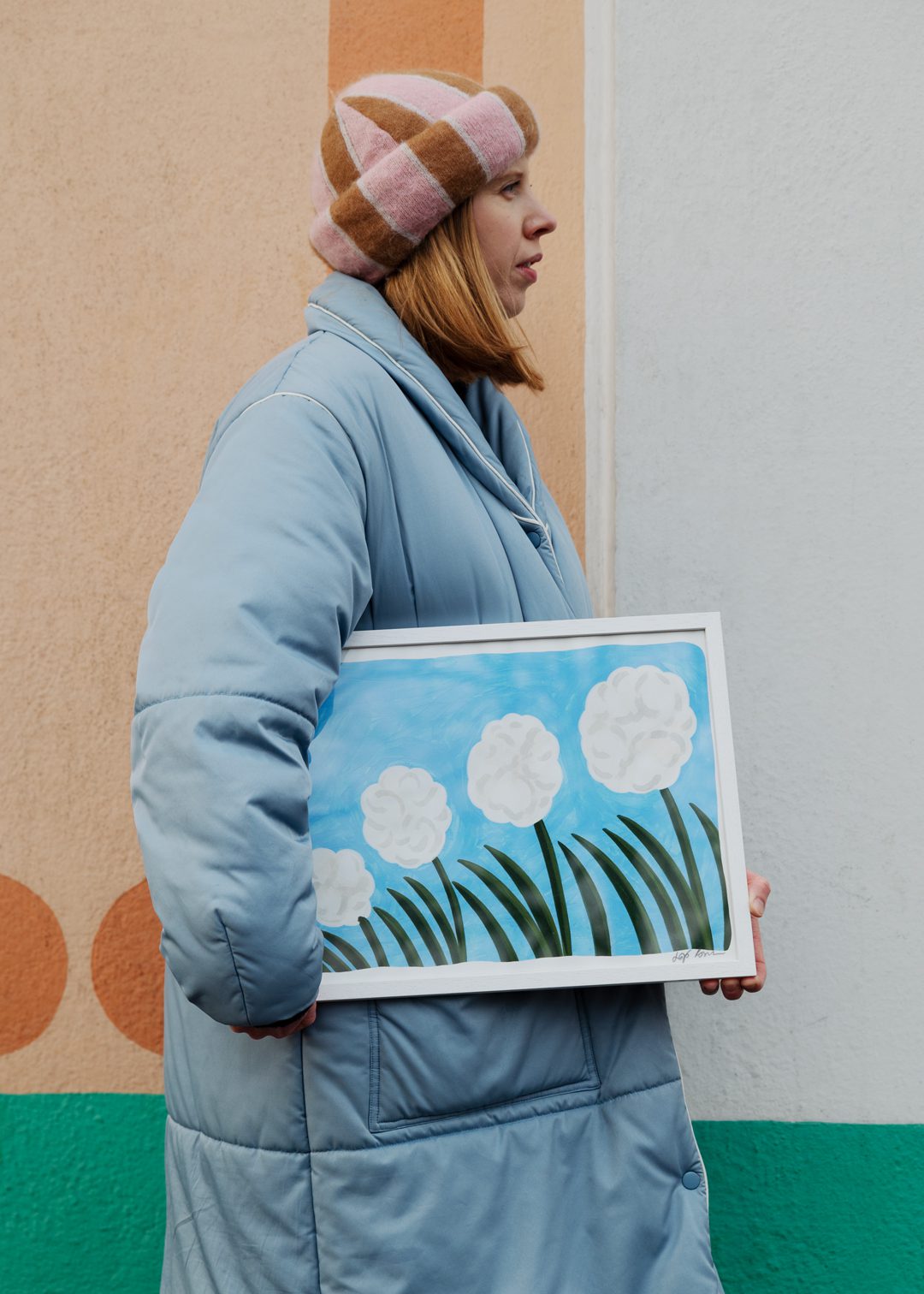
People Reading
When asked if there is something that particularly draws Kosicka’s attention when she paints, she does not need time to consider: “There is the motif of solitude and the act of reading. These are often present in my work.”
To Kosicka, reading and absorbing stories of various kinds are deeply connected with her work as an illustrator. She often finds herself listening to audiobooks while painting and drawing. The last book she finished was The Copenhagen Trilogy by Danish author Tove Ditlevsen: “It’s amazing to read a story that takes place in the city you live in. I loved it so much I didn’t want it to end.”
Kosicka’s fascination with reading manifests in her depiction of people she sees in cafés and libraries that read. It is an act of solitude, which Kosicka challenges by adding in spots of intense colours like red, ultramarine or orange. And of course, there are the books themselves: “What I find really interesting is not just the stories, but also the books themselves as objects with beautiful covers and fonts.”
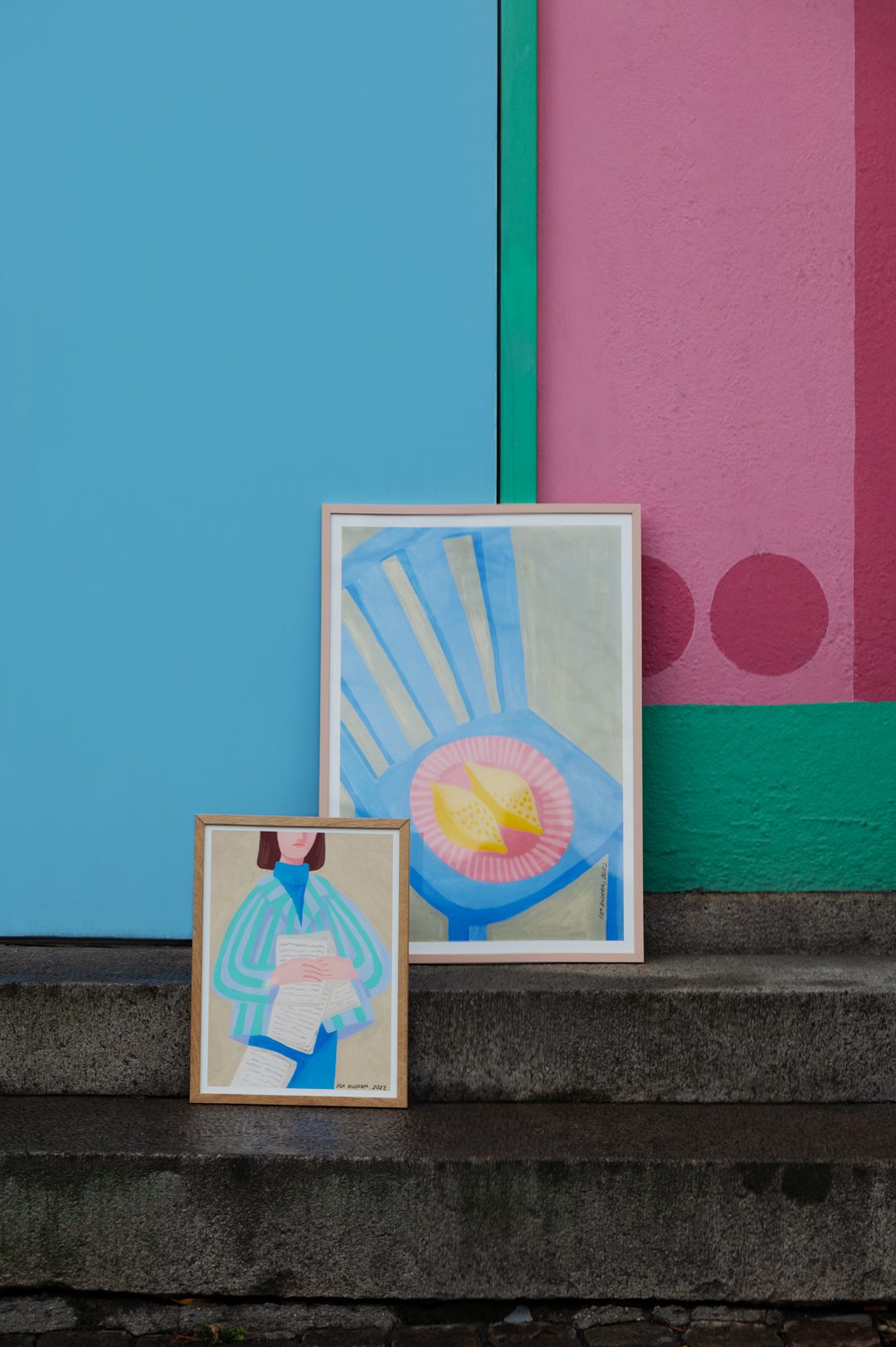
Getting Lost in Copenhagen
When Kosicka moved from Budapest where she lived at the time to Copenhagen, what she remembers most clearly are the countless times she got lost. “Copenhagen is totally flat compared to Budapest, where you could just look up to find the Buda hill or the Citadel and then you knew where you were.”
However, with its narrow cobble-stoned streets Copenhagen has since become a favoured city of Kosicka. So much so that she has written and illustrated a guidebook of the city that she now calls home — and it is no coincidence that we meet at Palads.
“This building really stands out from the rest of Copenhagen’s architecture. It has this kitschy combination of bright circus-like colours and neoclassical architecture, which is very challenging for the viewer,” Kosicka says and continues: “And it just makes you smile.”
Kosicka’s favourite place in Copenhagen though is The Garden of the Royal Library. A hidden space of greenery, where the high walls quiet out the noise of the city and transcend a moment of calmness.
